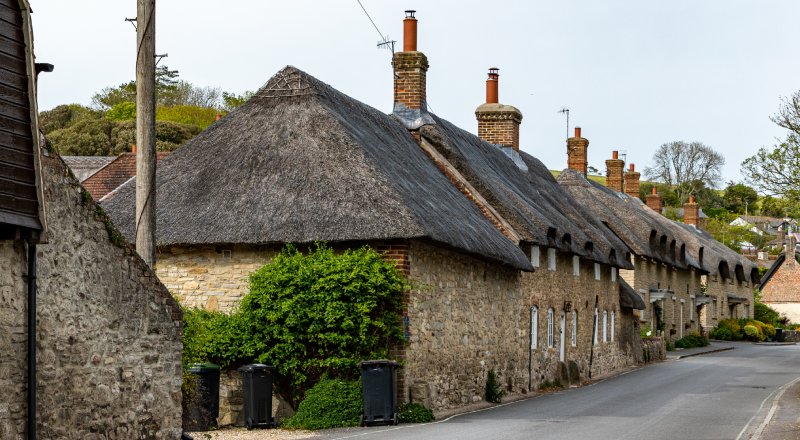In the UK, mortgage lenders cater to a wide range of properties. However, not all lenders lend on every type of property, particularly those with non-standard construction.
Thankfully, there are lenders that offer mortgages for these homes.
In this guide, we’ll discuss how a mortgage for a non-standard construction UK property works and how to secure one. Keep in mind that a mortgage building survey is essential when purchasing a house, providing vital information about its structure for lending purposes.
First, what is standard construction?
In the world of mortgages, ‘standard’ construction refers to properties built using traditional materials and techniques that are the most common. These homes typically exhibit characteristics that lenders find reliable and secure, with a lower risk of unforeseen issues affecting the property’s durability or value.
The common components of a standard construction property include:
Walls
Predominantly made of bricks or blocks, these walls offer strength, stability, and a sense of familiarity for lenders. A classic example is the cavity wall, which consists of two layers of bricks with a small gap in between, offering insulation and protection against dampness.
These walls provide the structural strength and will hold the weight of upper floors and roof.
Stone walls are also acceptable.
Roof
Standard construction homes usually have pitched roofs covered with tiles or slates, which provide long-lasting protection against the elements.
These materials have been tried and tested over time, ensuring that the property remains weathertight and structurally sound.
A small area of flat roofing would be OK, perhaps for an extension or garage.
If your home has normal walls but uses something other than tile or slate for the roof, it might be considered non-standard construction. Roofs made from materials like thatch, concrete, stramit, plastic, fibreglass, felt, wood, corrugated sheeting, or asbestos are all examples of non-standard roofs.
Foundations
Concrete foundations are the norm in standard construction, providing a solid base for the property to stand on. This ensures that the building remains stable and resistant to subsidence, a key factor for lenders assessing the property’s risk.
Floors
Suspended timber floors are common in standard construction homes, allowing for adequate ventilation and reducing the risk of dampness. Solid concrete floors are also considered standard, providing a durable and robust surface.
Windows
Standard construction typically includes wooden or uPVC windows and doors, which are widely recognised for their energy efficiency and durability.
This would include the more modern composite doors.
Most houses built in the post-1950s era that are considered standard construction typically feature brick and/or block csvity walls, complete with damp courses resting on a concrete foundation, and a tiled pitched roof.
By adhering to these tried-and-true methods and materials, standard construction properties present less risk to mortgage lenders. As a result, obtaining a mortgage for such a property is generally more straightforward, with a broader range of lenders and mortgage products available.
Repossessions
If a homeowner stops paying their mortgage, or breaches the mortgage conditions, the lender will take steps to legally repossess the property. They don’t want to hang on to it, and so banks will either sell these at a property auction or via certain estate agents.
When buying a repossessed house you need to establish early on what it is made from, as this affects your choice of lenders. You won’t be able to ask the owners, so try and obtain as much information as possible before you start incurring legal fees and survey fees.
What is a Non-Standard Construction Mortgage?
If you’re planning to buy a property made from materials other than the typical bricks and mortar, you might need to find a lender who can accommodate unconventional, or non-standard, building styles.
Most lenders want your house to be made with:
- brick walls
- concrete foundations
- and a tiled roof
Anything deviating from this is deemed non-standard.
This means that there are lots of property types that could be classified as non-standard:
- Thatched roof houses
- Steel frame houses
- Timber framed houses
- Listed Properties
- PRC concrete houses
- Prefabs
- Flint walls
- Single skin brick walls
- Corrugated iron walls or frameworks
Are these mortgages difficult to get?
Applying for a mortgage on a non-standard property is normally more difficult than for a standard one, as many lenders enforce stricter criteria for the properties they’re willing to finance.
Some high street lenders may provide loans for particular types of unconventional construction properties but not for others. If you’re unable to find a high street lender or building society to accommodate the property you wish to buy, you’ll likely need a specialist lender.
These specialist lenders only work with mortgage brokers, they don’t deal directly with borrowers.
Most specialist lenders will demand a larger mortgage deposit and might impose a higher interest rate. This can understandably make securing a mortgage more challenging.
If you manage to obtain a mortgage from a high street lender or building society, the deals won’t be as costly as those from a specialist lender, but there are less options for borrowers to consider.

Who offers non-standard mortgages?
To get a competitive deal you will need to use an independent mortgage broker who is experienced with specialist property mortgages.
This is because, depending on the property type you wish to buy, you are likely to need a specialist mortgage lender who accepts non-standard construction houses. Specialist lenders generally don’t provide advice to borrowers, instead relying on brokers to guide their clients.
The positive news is that Respect Mortgages can arrange for an independent, specialist mortgage broker with over 45 years of experience in arranging both standard and unconventional construction mortgages to help you.
They maintain strong relationships with all of the specialist lenders and have priority access to underwriters. This allows your mortgage application to be discussed in great detail before submitting it.

Here’s what the Halifax says:
Property acceptability is based on a satisfactory valuation report from the bank’s appointed valuer. Non-standard construction will be assessed on individual merit. Certain types of pre-cast reinforced concrete (PRC) construction are designated defective and may not be acceptable unless repaired.
Unacceptable Construction Types
Timber or metal framed buildings where the cavity, between frame & cladding, has been retrospectively filled with an insulation material
Concrete walls as built in Cornwall or Devon before 1950 (1960 for postcodes PL12, 13, 14, 15, 17, 18, 22 & 23) where valuer has recommended a Mundic report and test of the concrete has classified the concrete in either class B or C
Unrepaired, designated defective properties under the Housing Act 1985, Housing (Scotland) Act 1987, Housing (Northern Ireland) Order 1986 are not acceptable.
Flats or maisonettes of large panel system type unless acceptable structural appraisal on the whole block.
Load bearing panels of asbestos or gypsum plaster construction
Properties which are structurally unsound & Properties which are uninsurable.
Property types – unacceptable
- Properties with a floor area of less than 30m2
- Properties with a plot size in excess of 4 hectares/10 acres
- Properties listed under the Housing Defects Act (valuers will advise us if the property falls within the Act)
- Steel clad houses
- System built concrete construction
- Prefabricated/(pre)reinforced/poured or shuttered concrete construction
- Easi-form construction (except by Laing from 1945 onwards)
- Mundic block property
- Properties built on contaminated land
- Timber-framed property with cavity wall insulation unless installed during construction
- Multi-ownership properties
- Shared ownership properties
- Working farms, smallholdings and crofts
- Where the purchase of the property was completed within the last 6 months unless they meet our back to back criteria.
Non-standard construction types
Timber-framed – Timber-framed properties constructed between 1920 and 1965 are considered unacceptable for mortgage purposes due to inferior building regulations in relation to vapour barriers.
Scottwood/Swedish are also considered unacceptable for mortgage purposes.
All timber – Due to the unusual nature of the construction, properties made entirely from timber are usually considered restricted. We will be guided by the valuer’s comments on marketability. If acceptable, they will be subject to a maximum LTV of 80%
Wimpey No Fines and Laing Easiform – Properties dated from 1945 onwards are acceptable, subject to the valuer’s comments, at the lower LTV ratio of 80%.
Bear in mind that Wimpey No-Fines properties are currently being monitored in the north of England where some deterioration has been noted. If this construction type is subsequently defined as ‘defective‘, this could have a significant impact on the value and saleability of the property.
Steel frame – Water penetration and condensation can cause corrosion of the steel frame causing instability of the property. Steel frame properties are acceptable subject to a satisfactory structural engineer’s report, at the lower LTV ratio of 80%.
Livett Cartwright steel frames, Hawthorn Leslie steel frames with boarded finish, and BISF (British Iron and Steel Federation) are considered unacceptable for mortgage purposes.
Kit-built – The following ‘kit-built’ type of constructions with special architectural merit or proven long-term durability are considered restricted with a maximum LTV of 80%, subject to usual warranty provision if less than 10 years old:
- Huf Haus
- Potton
- Skandia-Hus
- Border Oak (and other bulk timber kit forms)
- Colt/Guildway (these types are subject to an entirely satisfactory valuer statement of condition and saleability, which could be enhanced by location if they are found on larger rural or semi-rural plots)
Durisol – Durisol houses are accepted up to 80% LTV, subject to a satisfactory structural engineer’s report. Durisol flats are considered unacceptable for mortgage purposes.
Mundic block – Properties containing mundic block materials (primarily situated in Cornwall & Devon) must be tested using the screening test developed by the Royal Institution of Chartered Surveyors. The results of the test will be considered as follows:
A = Suitable for mortgage purposes
A/B = Restricted, acceptable at up to 80% LTV, subject to valuer’s comments
B = Unacceptable for mortgage purposes
C = Unacceptable for mortgage purposes
Bellrock – Load bearing gypsum plaster panel construction is considered unacceptable for mortgage purposes.
Points to consider
If you need a non-standard construction mortgage, it’s essential to consider the points below, as there are often additional costs or requirements associated with unconventional buildings.
Insurance
Similar to any mortgaged property, having buildings insurance is compulsory. However, due to the unique nature of unconventional construction, you’ll most likely require specialist insurance cover, which can be more expensive than standard buildings insurance.
Keep in mind that not all buildings insurance policies cover damage caused by events such as floods or storms, so ensure you’re sufficiently protected when finding the appropriate insurance cover.
Maintenance
These property types demand more extensive maintenance or specialised treatment, which can be costlier. For example, a thatched roof must be entirely replaced every 40 years or so.
In many cases, maintenance is given increased attention in non-standard homes, as improper care may cause damage over time and significantly decrease the property’s value.
Surveys
Mortgage lenders will require a valuation to be conducted on the property before finalising a mortgage agreement. They’ll coordinate this with the estate agent or seller. The valuation will assess any potential risks and confirm the property’s market value.
If the valuer identifies any potential issues or risks with the property, the lender may require a more detailed survey, such as a structural survey. The likelihood of needing a more comprehensive survey increases with a non-standard construction property.
Repair or Development Options
You might be able to transform an unusually constructed property into a more mortgageable one by making expensive repairs or improvements. For example, some owners have been known to replace a thatched roof with a more conventional tiled roof.
If the lender won’t agree to these conditions and/or you don’t have the money to fund the work on the property yourself, you may be able to secure bridging finance to purchase the property and pay for the necessary work. Once this work is completed, you can then remortgage with a lender.
Uninhabitable houses
Although non-exclusively linked to the type of construction used, sometimes a house is classed as uninhabitable, making it very difficult to get a mortgage.
Here you will need help from a broker to either find a specialist mortgage lender, or to purchase the house with a bridge loan and then fix the problems before remortgaging.
Future saleability
It’s important to be aware that the future value and appeal of some houses will be uncertain, due to their style of construction.
As mortgage eligibility becomes increasingly important and lenders’ attitudes to risk change over time, a property that was once mortgageable may become more difficult to finance in the future.
CONTACT A MORTGAGE BROKER
If you are ready to take the next step then we can put you in touch with a fully qualified independent mortgage broker.
How are these mortgages different?
Overall, non-standard property mortgages aren’t dramatically different from regular ones.
Some notable differences to consider include:
A lower maximum loan-to-value: this is the percentage of the property’s value that the lender is willing to finance. Due to their criteria, some lenders might cap the LTV on these properties at 80% – 85%.
A higher interest rate: if you can’t secure a high street lender, you may need a specialist lender – who generally have higher rates.
Longer processing times: the underwriting stage of the mortgage process will be more thorough and take longer.
Limited choice: the requirement for a specialist lender with flexible criteria, will restrict the number of lenders available to you.
May require a broker: if you need a specialist lender, you’ll have to work with a specialist mortgage broker.
Keep in mind that a mortgage broker will significantly increase your chances of securing a mortgage for a non-standard construction home and make the process much more manageable for you.

Options for properties in Scotland
It is possible to secure a non-standard construction mortgage for a home in Scotland.
However, it may prove more challenging than in England and Wales, simply because there are fewer lenders. Lenders for unconventional properties operating in Scotland often have postcode restrictions in place, making it more difficult to obtain a mortgage for a property located away from the mainland.
It’s crucial to engage a broker well-versed in the Scottish mortgage market, which has a more limited selection of lenders and products.
Respect Mortgages can recommend an award winning mortgage broker that has a team of experienced advisers who regularly assist people in purchasing all property types in Scotland.
So, if you’re considering buying a non-standard property in Scotland, contact us today.
Choosing to work with a mortgage broker can unlock a myriad of benefits, especially when it comes to non-standard construction properties.
Let’s look into the advantages that a broker can provide:
Access to a wider range of lenders: Mortgage brokers have relationships with a variety of lenders, including high street banks, building societies, and specialist lenders. This means they can present you with a more comprehensive range of mortgage options tailored to your unique circumstances.
Expertise in non-standard construction properties: An experienced mortgage broker understands the intricacies of non-standard construction properties and the challenges they present. They’ll be able to provide you with invaluable advice and guide you through the process, making it smoother and more efficient.
Time and effort savings: With their extensive knowledge of the mortgage market and lender criteria, a broker can save you time and effort by filtering through available options and identifying the most suitable mortgage deals for your situation.
Bespoke guidance and advice: A mortgage broker will assess your financial situation and provide tailored advice that aligns with your goals and needs. This personalised approach ensures you have the best chance of securing a mortgage.
Support throughout the process: From the initial consultation to the final stages of your mortgage application, a broker will be there to guide you every step of the way. Their support can be invaluable in navigating any complexities that may arise during the process.
Potential cost savings: A broker’s expertise and access to exclusive deals may result in cost savings by securing a mortgage with a more favourable interest rate or lower fees.
Post-completion support: Even after your mortgage has been finalised, a broker will continue to offer support and advice. They can help you stay informed about changes in the market or lender criteria that could impact your property’s mortgageability in the future.
In conclusion, enlisting the help of a mortgage broker when purchasing a non-standard construction property can make a significant difference. They bring valuable expertise, access to a broader range of lenders, and support throughout the entire process, ensuring you secure the best possible mortgage for your unique situation.


